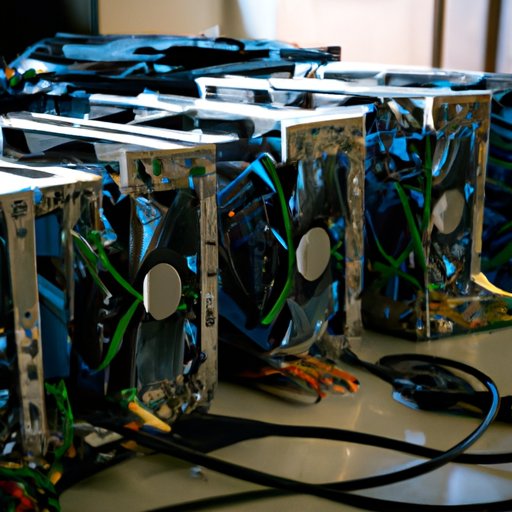Introduction
Cryptocurrency mining is the process by which new blocks are added to a blockchain and transactions are confirmed and secured. This process involves using specialized hardware and software to solve complex mathematical problems. In exchange for this work, miners are rewarded with small amounts of cryptocurrency for their efforts. As the mining process becomes more competitive and difficult, miners must invest in more powerful hardware and software to remain competitive. This guide will cover all the basics of cryptocurrency mining, from hardware and software requirements to setting up a mining rig, choosing profitable coins, optimizing energy efficiency and understanding the risks associated with mining.
Hardware and Software Requirements
In order to mine cryptocurrency, you’ll need certain computer components and software programs. The most important of these components is a powerful graphics card or GPU, as this is what will be used to solve the mathematical problems. You’ll also need a motherboard, CPU, RAM, storage device, and cooling system to keep your hardware running efficiently. Additionally, you’ll need a crypto wallet to store your mined coins, as well as a reliable internet connection.
Once you have the necessary hardware, you’ll need to install the required software programs. These include a cryptocurrency miner, which is the program that actually does the mining, as well as a mining pool, which is a platform where multiple miners can join forces to increase their chances of solving a block and receiving rewards.
Types of Mining Algorithms
The type of algorithm used for mining depends on the type of cryptocurrency being mined. The two most common types of algorithms are proof-of-work (POW) and proof-of-stake (POS). POW algorithms require miners to solve complex mathematical problems in order to add new blocks to the blockchain, while POS algorithms allow miners to stake their coins in order to receive rewards. Other popular algorithms include delegated proof-of-stake (DPOS), delegated Byzantine fault tolerance (dBFT), and direct acyclic graph (DAG).

Setting Up a Mining Rig
Once you have the necessary hardware and software in place, you can begin setting up your mining rig. The first step is to choose a mining pool. This is an online platform where miners can join forces to increase their chances of solving a block and receiving rewards. Once you’ve chosen a mining pool, you’ll need to install the required software programs and configure the settings. This includes setting up your wallet address, mining pool URL, and other parameters.

Choosing the Most Profitable Coins to Mine
When it comes to mining cryptocurrencies, profitability is key. Choosing the most profitable coins to mine requires research and consideration of several factors, such as hash rate, difficulty level, and market value. It’s also important to consider the cost of electricity, as this can have a significant impact on your overall profits. Researching different cryptocurrencies and understanding the factors that affect their profitability is essential if you want to maximize your earnings.
Optimizing Energy Efficiency
Mining cryptocurrency can be very energy intensive, so it’s important to optimize your energy usage as much as possible. Identifying the power usage of each component of your mining rig is the first step in this process. You can then use software tools to monitor and adjust your energy usage in real time. This will help you reduce your electricity costs and maximize your profits.
Risks Associated with Mining Cryptocurrencies
Although cryptocurrency mining can be lucrative, there are certain risks associated with it. Financial risk is one of the most common risks, as prices of cryptocurrencies can be volatile. Additionally, there is always the risk of theft or hacking, as miners may store large amounts of coins in their wallets. It’s important to understand these risks before investing in cryptocurrency mining.
Conclusion
Cryptocurrency mining is a complex process that requires specialized hardware and software. By understanding the hardware and software requirements, different types of mining algorithms, setting up a mining rig, choosing the most profitable coins to mine, optimizing energy efficiency, and understanding the associated risks, you can maximize your chances of success in the world of cryptocurrency mining.
(Note: Is this article not meeting your expectations? Do you have knowledge or insights to share? Unlock new opportunities and expand your reach by joining our authors team. Click Registration to join us and share your expertise with our readers.)
